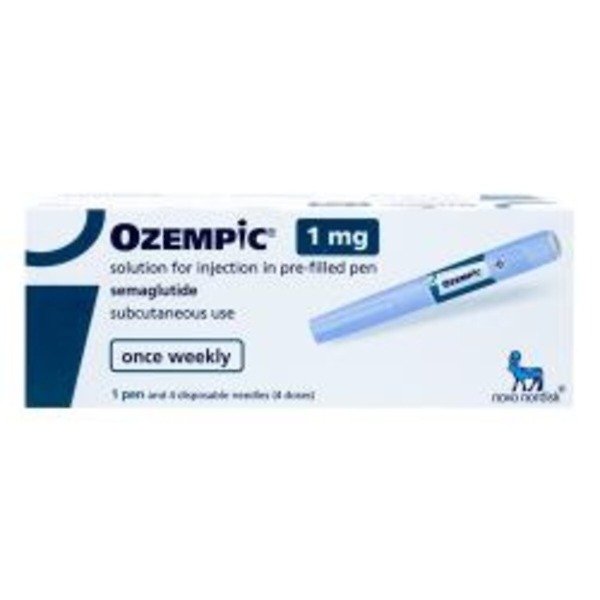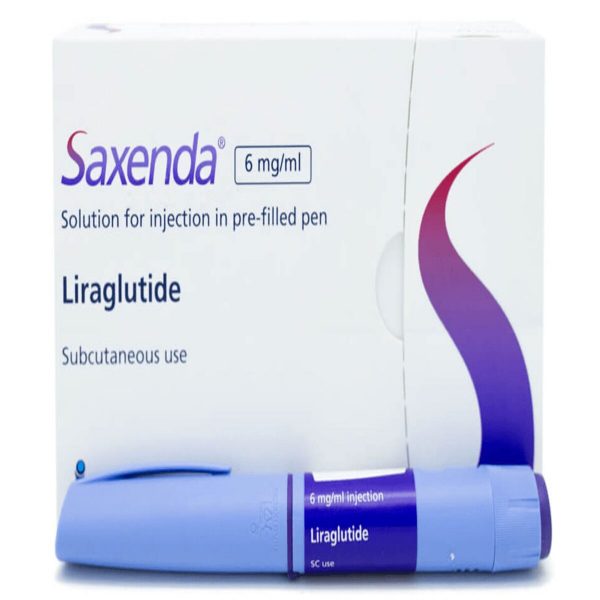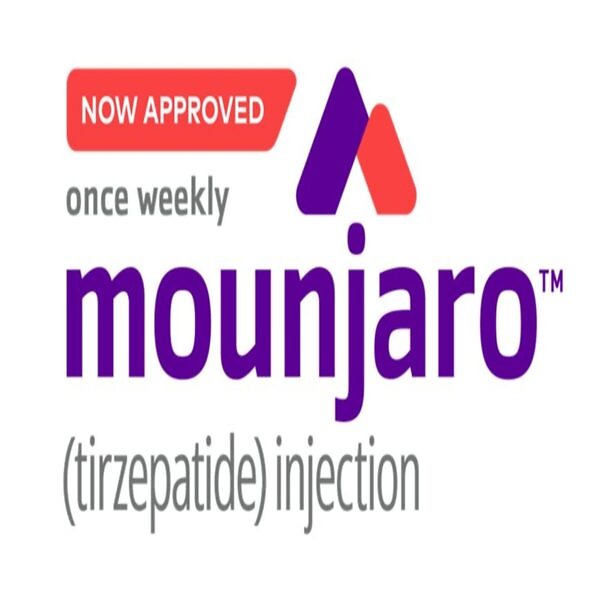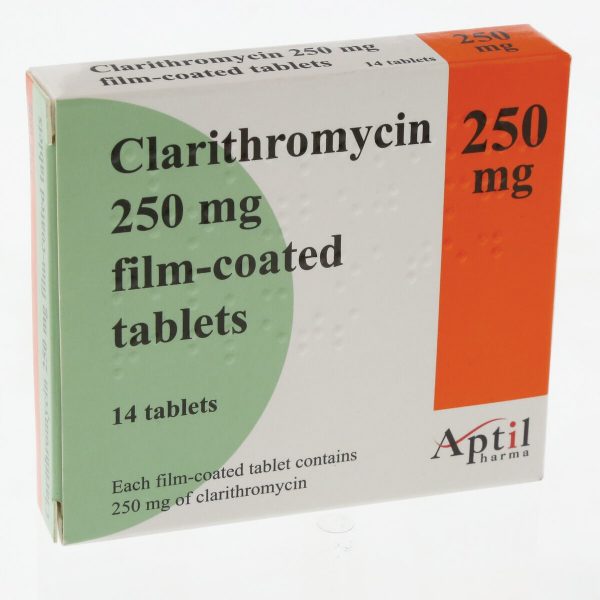Ozempic Injection – Semaglutide Injection, 1 Pen
Ozempic pen is available in 3 strengths
0.25mg, 0.5mg, and 1mg
Prescription required to buy Ozempic
Ozempic Injection – Semaglutide Injection, Pack of 1 Pre-filled Pen is available in 3 strengths:
- Ozempic 0.25mg Injection – Semaglutide 0.25mg Injection
- Ozempic 0.5mg Injection – Semaglutide 0.5mg Injection
- Ozempic 1mg Injection – Semaglutide 1mg Injection
£144.50 – £169.50
CompareCompare- Ozempic 0.25mg Injection - Semaglutide 0.25mg Injection
- Ozempic 0.5mg Injection - Semaglutide 0.5mg Injection
- Ozempic 1mg Injection - Semaglutide 1mg Injection
- Description
- Additional Information
- Brand
- How To Use
- Product Details
- Side Effects
- Ingredients
- How to Store
- Patient Information leaflet
- Questions & Answers (1)
Ozempic Injection – Semaglutide Injection, 1 Pen
Are you struggling to lose weight and manage your diabetes? Ozempic injection may be the answer you’re looking for. This prescription medication contains the active ingredient semaglutide, which works with your body to lower blood sugar levels when they get too high and can help prevent heart disease. It’s an effective way to boost your weight loss efforts, available in three strengths: 0.25mg, 0.5mg and 1mg, and comes as pre-filled injection pens that make it easy to administer yourself just once a week. Plus, Ozempic is designed specifically for those with a BMI of 30 or higher when used in conjunction with regular exercise and a healthy diet. Together, we can make every action count towards optimal health – start taking control today with Ozempic!
Ozempic is used:
- on its own – if your blood sugar is not controlled well enough by diet and exercise alone, and you cannot use metformin (another diabetes medicine) or
- with other medicines for diabetes – when they are not enough to control your blood sugar levels. These other medicines may include: oral antidiabetics (such as metformin, thiazolidinediones, sulfonylureas, sodium-glucose cotransporter 2 (SGLT2) inhibitor) or insulin.
You must continue with your diet and exercise plan as told by your doctor, pharmacist or nurse.
Wegovy and Ozempic are the same drugs, sold under different brand names but the license for what they are used differs.
How does Ozempic (Semaglutide) work?
Ozempic (Semaglutide) helps to reduce appetite and food cravings in conjunction with a healthy diet and exercise by targeting the hormone GLP-1. This natural hormone manages blood glucose levels, which can help promote insulin production from your pancreas when sugar is too high or remove excess sugars from the liver if they are not needed – making it useful for type 2 diabetes management. Ultimately, this causes digestion to slow down after eating so that you feel fuller sooner while still getting all of their essential nutrients.
Benefits of Ozempic Injection:
- Reduces your blood sugar level only when blood sugar is too high
- Helps prevent heart disease
- Helps you lose body weight when combined with a healthy diet and exercise
Can someone who is pregnant or breastfeeding use Ozempic Injection?
Ozempic Injection should not be used during pregnancy, as it is not known if it may affect your unborn child. Therefore, it is recommended to use contraception while using this medicine. If you wish to become pregnant, you should stop using this medicine at least two months in advance. If you become pregnant when using this medicine, talk to your doctor right away, as your treatment will need to be changed.
Ozempic Injection Reviews
After using Ozempic Injection, it’s helpful to let others know about your experience. Reviews of an item help other users know that medicines received have helped the condition it is claimed for, how well the treatment worked or any issues to be aware of. We invite our users to leave a review of both their treatment and of the service provided. Click on the reviews tab to see if there has been feedback on this item.
What is the price of Ozempic Injection?
The price of Ozempic Injection starts from £144.50
Where can you buy Ozempic Injection?
You can buy Ozempic Injection at Dock Pharmacy Essex UK, UK Online Pharmacy.
Can you buy Ozempic Injection Over the counter?
Ozempic Injection is not available to buy over the counter. You need a prescription to buy Ozempic Injection
| Strength | 0.25mg Pre-Filled pen, 0.5mg Pre-Filled Pen, 1mg Pre-Filled pen |
|---|---|
Brand
Ozempic
How To Use
How to use Ozempic
Always use this medicine exactly as your doctor has told you. Check with your doctor, pharmacist or nurse if you are not sure.
How much to use
- The starting dose is 0.25 mg once a week for four weeks.
- After four weeks your doctor will increase your dose to 0.5 mg once a week.
- Your doctor may increase your dose to 1 mg once a week if your blood sugar is not controlled well enough with a dose of 0.5 mg once a week.
- Your doctor may increase your dose to 2 mg once a week if your blood sugar is not controlled well enough with a dose of 1 mg once a week.
Do not change your dose unless your doctor has told you to
How Ozempic is given
Ozempic is given as an injection under the skin (subcutaneous injection).
Do not inject it into a vein or muscle.
- The best places to give the injection are the front of your thighs, the front of your waist (abdomen), or your upper arm.
- Before you use the pen for the first time, your doctor or nurse will show you how to use it. Detailed instructions for use are on the other side of this leaflet.
When to use Ozempic
- You should use this medicine once a week on the same day each week if possible.
- You can give yourself the injection at any time of the day – regardless of meals.
To help you remember to inject this medicine once a week only, it is recommended to note the chosen weekday (e.g. Wednesday) on the carton and to write the date on the carton every time you have injected it.
If necessary you can change the day of your weekly injection of this medicine as long as it has been at least 3 days since your last injection of it. After selecting a new dosing day, continue with once a week dosing.
Product Details
What you need to know before you use Ozempic
Do not use Ozempic • if you are allergic to semaglutide or any of the other ingredients of this medicine (listed in section 6). Warnings and precautions Talk to your doctor, pharmacist or nurse before using this medicine. This medicine is not an insulin and should not be used if: • you have type 1 diabetes – a condition where your body does not produce any insulin 2 • you develop diabetic ketoacidosis – a complication of diabetes with high blood sugar, breathing difficulty, confusion, excessive thirst, a sweet smell to the breath or a sweet or metallic taste in the mouth. Ozempic is not an insulin and should therefore not be used as a substitute for insulin. Effects on the digestive system During treatment with this medicine, you may feel sick (nausea) or be sick (vomiting), or have diarrhoea. These side effects can cause dehydration (loss of fluids). It is important that you drink plenty of fluids to prevent dehydration. This is especially important if you have kidney problems. Talk to your doctor if you have any questions or concerns. Severe and on-going stomach pain which could be due to acute pancreatitis If you have severe and on-going pain in the stomach area – see a doctor straight away as this could be a sign of acute pancreatitis (inflamed pancreas). Please see section 4 for the warning signs of inflamed pancreas. Hypoglycaemia Combining a sulfonylurea or an insulin with this medicine might increase the risk of getting low blood sugar levels (hypoglycaemia). Please see section 4 for the warning signs of low blood sugar levels. Your doctor may ask you to test your blood sugar levels. This will help your doctor decide if the dose of the sulfonylurea or insulin needs to be changed to reduce the risk of low blood sugar. Diabetic eye disease (retinopathy) If you have diabetic eye disease and are using insulin, this medicine may lead to a worsening of your vision, and this may require treatment. Tell your doctor if you have diabetic eye disease or if you experience eye problems during treatment with this medicine. Children and adolescents This medicine is not recommended in children and adolescents under 18 years as the safety and efficacy in this age group have not yet been established. Other medicines and Ozempic Tell your doctor, pharmacist or nurse if you are taking, have recently taken or might take any other medicines, including herbal medicines or other medicines you bought without a prescription. In particular, tell your doctor, pharmacist or nurse if you are using medicines containing any of the following: • Warfarin or other similar medicines taken by mouth to reduce blood clotting (oral anticoagulants). Frequent blood testing to determine the ability of your blood to clot may be required. • If you are using insulin, your doctor will tell you how to reduce the dose of insulin and will recommend you to monitor your blood sugar more frequently, in order to avoid hyperglycaemia (high blood sugar) and diabetic ketoacidosis (a complication of diabetes that occurs when the body is unable to break down glucose because there is not enough insulin). Pregnancy and breast-feeding If you are pregnant or breast-feeding, think you might be pregnant, or are planning to have a baby, ask your doctor for advice before taking this medicine. 3 This medicine should not be used during pregnancy, as it is not known if it may affect your unborn child. Therefore, it is recommended to use contraception while using this medicine. If you wish to become pregnant, you should stop using this medicine at least two months in advance. If you become pregnant when using this medicine, talk to your doctor right away, as your treatment will need to be changed. Do not use this medicine if you are breast-feeding, as it is unknown if it passes into breast milk. Driving and using machines Ozempic is unlikely to affect your ability to drive and use machines. If you use this medicine in combination with a sulphonylurea or insulin, low blood sugar (hypoglycaemia) may occur which may reduce your ability to concentrate. Avoid driving or using machines if you get any signs of low blood sugar. See section 2, ‘Warning and precautions’ for information on increased risk of low blood sugar and section 4 for the warning signs of low blood sugar. Talk to your doctor for further information. Sodium content This medicine contains less than 1 mmol sodium (23 mg) per dose, that is to say essentially ‘sodiumfree’.
Side Effects
Possible side effects
Like all medicines, this medicine can cause side effects, although not everybody gets them. Serious side effects Common (may affect up to 1 in 10 people) • complications of diabetic eye disease (retinopathy) – you should inform your doctor if you experience eye problems, such as changes in vision, during treatment with this medicine. Uncommon (may affect up to 1 in 100 people) • Inflamed pancreas (acute pancreatitis) which could cause severe pain in the stomach and back which does not go away. You should see a doctor immediately if you experience such symptoms. Rare (may affect up to 1 in 1 000 people) • severe allergic reactions (anaphylactic reactions, angioedema). You should seek immediate medical help and inform your doctor straight away if you get symptoms such as breathing problems, swelling of face, lips, tongue and/or throat with difficulty swallowing and a fast heartbeat. Other side effects Very common (may affect more than 1 in 10 people) • feeling sick (nausea) – this usually goes away over time • diarrhoea – this usually goes away over time Common (may affect up to 1 in 10 people) • being sick (vomiting) • low blood sugar (hypoglycaemia) when this medicine is used with another antidiabetic medicine The warning signs of low blood sugar may come on suddenly. They can include: cold sweat, cool pale skin, headache, fast heartbeat, feeling sick (nausea) or very hungry, changes in vision, feeling sleepy or weak, feeling nervous, anxious or confused, difficulty concentrating or shaking. Your doctor will tell you how to treat low blood sugar and what to do if you notice these warning signs. 5 Low blood sugar is more likely to happen if you also take a sulfonylurea or insulin. Your doctor may reduce your dose of these medicines before you start using this medicine. • indigestion • inflamed stomach (‘gastritis’) – the signs include stomach ache, feeling sick (nausea) or being sick (vomiting) • reflux or heartburn – also called ‘gastro-esophageal reflux disease’ (GERD) • stomach pain • bloating of the stomach • constipation • burping • gall stones • dizziness • tiredness • weight loss • less appetite • gas (flatulence) • increase of pancreatic enzymes (such as lipase and amylase). Uncommon (may affect up to 1 in 100 people) • change in the way food or drink tastes • fast pulse • injection site reactions – such as bruising, pain, irritation, itching and rash. • allergic reactions like rash, itching or hives. Reporting of side effects If you get any side effects, talk to your doctor, pharmacist or nurse. This includes any possible side effects not listed in this leaflet. You can also report side effects directly via . Great Britain: Yellow Card Scheme Website: www.mhra.gov.uk/yellowcard or search for MHRA Yellow Card in the Google Play or Apple App Store By reporting side effects you can help provide more information on the safety of this medicine
Ingredients
What Ozempic contains
- The active substance is semaglutide
The other ingredients are: disodium phosphate dihydrate, propylene glycol, phenol, water for injections, sodium hydroxide/hydrochloric acid (for pH adjustment). See also section 2, ‘Sodium content’.
How to Store
How to store Ozempic
Keep this medicine out of the sight and reach of children.
Do not use this medicine after the expiry date which is stated on the pen label and carton after ’EXP’. The expiry date refers to the last day of that month.
Before opening:
Store in a refrigerator (2 °C–8 °C).
Do not freeze. Keep away from the cooling element. Protect from light.
During use:
- You can keep the pen for 6 weeks when stored at a temperature below 30 °C or in a refrigerator (2 °C–8 °C) away from the cooling element.
Do not freeze Ozempic and do not use it if it has been frozen.
- When you are not using the pen, keep the pen cap on in order to protect from light.
Do not use this medicine if you notice that the solution is not clear and colourless or almost colourless.
Do not throw away any medicines via wastewater or household waste.
Ask your pharmacist how to throw away medicines you no longer use.
These measures will help protect the environment.
Patient Information leaflet
Click here for the Patient Information leaflet
Please read before using the product
Questions and answers of the customers
You Might Also Like
Strength: 1mg Pre-Filled pen
Learn More£169.50
- Availability: in stock
size: Pack of 5
Learn More£230.00
- Availability: out of stock
Strength: Trulicity 0.75mg Injection
Learn More£139.50
- Availability: in stock
Strength: 0.5mg Pre-Filled Pen
Learn More£157.50
- Availability: in stock
Strength: Trulicity 1.5mg Injection
Learn More£139.50
- Availability: in stock
Other Products From This Seller
- Validated for 2-8°C for 30 to 36 hrs*
- Perfect for long-haul flights
- Carries pens, bottles, vials and syringes
- Manufactured from excellent quality materials
£102.50
- Availability: in stock
- Validated for 2-8°C for 18 to 24hrs*
- Perfect for long haul flights
- Carries pens, bottles, vials and syringes
- Integrated digital thermometer
- Manufactured from excellent quality materials
£69.45
- Availability: in stock
- Validated for 2-8°C for 15 to 20hrs*
- Perfect for long haul flights
- Carries pens, bottles, vials and syringes
- Integrated digital thermometer
- Manufactured from excellent quality materials
£54.50
- Availability: in stock
Steglatro Tablets – Ertugliflozin Tablets available in 2 strengths:
- Steglatro 5mg Tablets – Ertugliflozin 5mg Tablets
- Steglatro 15mg Tablets – Ertugliflozin 15mg Tablets
£49.50
- Availability: in stock
Original price was: £43.20.£39.50Current price is: £39.50.
Ursodeoxycholic Acid Tablets 250mg – Cholurso Tablets, 60 Tablets Introducing Cholurso Tablets the brand name of Ursodeoxycholic Acid Tablets 250mg – Your Solution for Gallstone Management and Liver Health Ursodeoxycholic Acid 250mg Tablets is a cutting-edge pharmaceutical formulation designed to positively influence bile composition, making it a versatile solution for various health concerns. Ursodeoxycholic Acid, […]
Learn MoreOriginal price was: £43.20.£39.50Current price is: £39.50.
- Availability: in stock
£156.00 – £210.00
Please note you need insulin pen needles to use Mounjaro Injection
Mounjaro Injection – Tirzepatide Injection, 4 Pre-filled Pens
Available in 6 strengths:
- Mounjaro 2.5mg Injection
- Mounjaro 5mg Injection
- Mounjaro 7.5mg Injection
- Mounjaro 10mg Injection
- Mounjaro 12.5mg Injection
- Mounjaro 15mg Injection
Learn More
£156.00 – £210.00
- Availability: in stock
Timoptol LA Gel – Timolol Eye Gel is available in 2 strengths
- Timoptol LA 0.5% Gel
- Timoptol LA 0.25% Gel
£7.50
- Availability: in stock
Original price was: £43.50.£39.75Current price is: £39.75.
One-Alpha Drops 2mcg/1ml – Alfacalcidol Drops 2mcg/1ml
Learn MoreOriginal price was: £43.50.£39.75Current price is: £39.75.
- Availability: in stock
Original price was: £5.99.£5.39Current price is: £5.39.
Ideal for irrigating and cleansing the eye, or a wound
Learn MoreOriginal price was: £5.99.£5.39Current price is: £5.39.
- Availability: in stock
Ultimate Surefit Erection Ring Set 15222 – Constrictor Rings For Erectile Dysfunction Experience Confidence and Pleasure with the Ultimate Surefit maintenance ring set – Your Key to Intimate Well-being Introducing the Ultimate Surefit Erection Ring, a premium solution meticulously designed for those seeking to overcome the challenges of erectile dysfunction. Crafted with precision and comfort […]
Learn More£58.50
- Availability: in stock




















